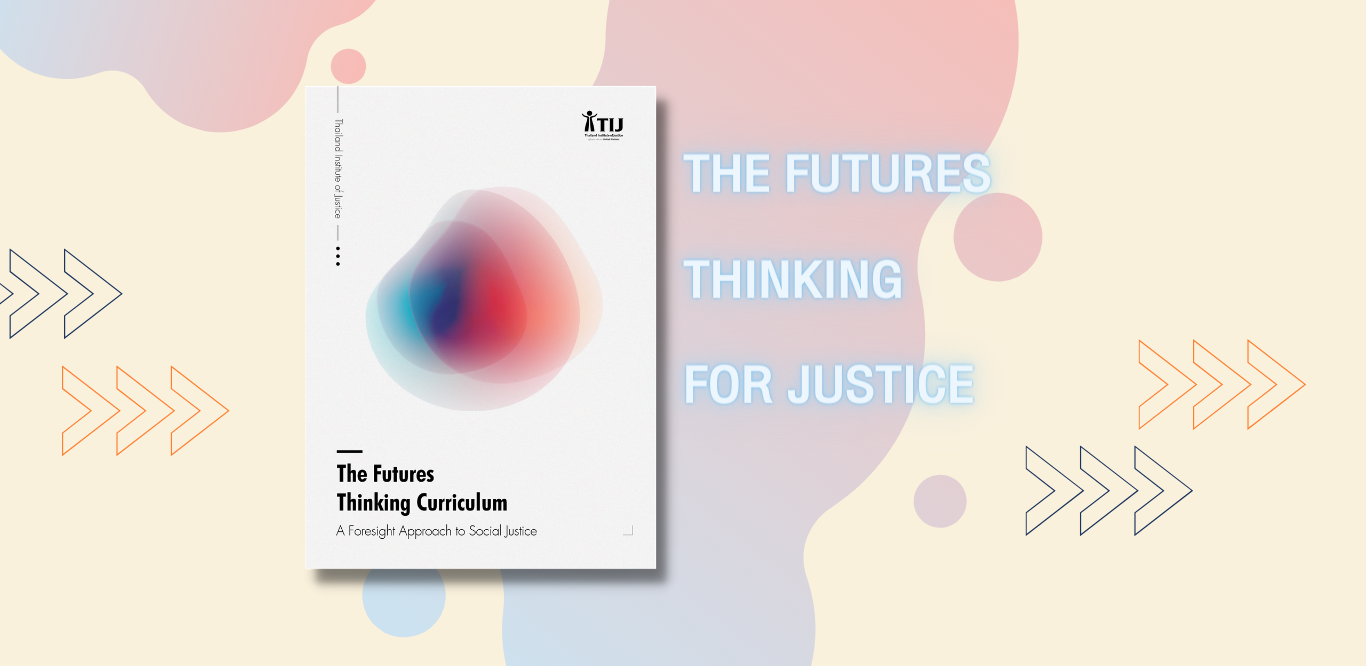Futures Thinking for Justice: A Curriculum Design Handbook
After a year of research and testing, TIJ Justice Innovation Unit is excited to present to you “The Futures Thinking Curriculum: A Foresight Approach to Social Justice’ (1st edition). This curriculum features a curated list of strategic foresight tools that builds on existing best practices and prototyped specifically for social justice issues.
Justice Innovation Unit has been promoting an innovative and collaborative approach to sustainably address social justice issues, focusing on understanding relevant and up-to-date solutions as well as shifting the mindset of changemakers. We believe that futures thinking is a powerful tool for the justice sector where resistance to change is high and the delivery of justice services may not always be user-centric or effective.
Why Futures Thinking?
Vision alignment for different actors:
With a focus on multi-stakeholder collaboration to address justice issues, strategic foresight can help bring people from different backgrounds on the same page with current issues and agree on the possibilities of the future scenarios. Seeing the same picture helps smooth the collaborative process, especially when working to change the status quo that touches on many actors in a system.
Anticipatory governance and management:
Effective justice delivery is the foundation for sustainable development. However, at this hypersonic rate of technological changes, the justice system is facing real challenges in staying up-to-date. Solving problems based on the context of the present is no longer adequate; it is important for the authorities and stakeholders in the justice sector to take an anticipatory and proactive approach when dealing with problems. Strategic foresight offers such an approach.
Participatory and effective planning for true people-centered justice services:
The process of strategic foresight is, by nature, participatory. It calls for contributions from multi-stakeholders, ensuring that future scenarios take into account the collective experiences of the relevant parties. As a result, the outcome will reflect the desire of the ‘users’. Applying this approach to justice-related issues will foster proactive solutions that address the real needs of affected stakeholders.
Our hope with this methodology is to create vivid scenarios to encourage deep and optimistic conversations about the future with various manifestations of social justice, before designing possible interventions to take today.
What will you find in this handbook?
- Literature Reviews of foresight methods currently applied to social justice
- The methodology of strategic foresight through a series of tools andfacilitator’s notes for each tool
- A case study on gender-based violence to illustrate the tools in practice
- A sample curriculum for a three-day workshop on futures thinking for justice
Who is this handbook intended for?
Facilitators who are looking to spark conversations and debates about the future in their speciality of social justice work in various settings: school, university, social enterprise, social innovator incubation house and more.
Note
The content of handbook is based on the experiences and opinions of TIJ Innovation Unit. We are constantly learning and applying futures thinking in order to continue developing this knowledge to share for public benefit.
This work is under creative commons. We encourage you to give it a try and send us feedback - we’d love to hear your stories. Last but not least, we hope this handbook can empower you to contribute to a more justice society, present and future.




